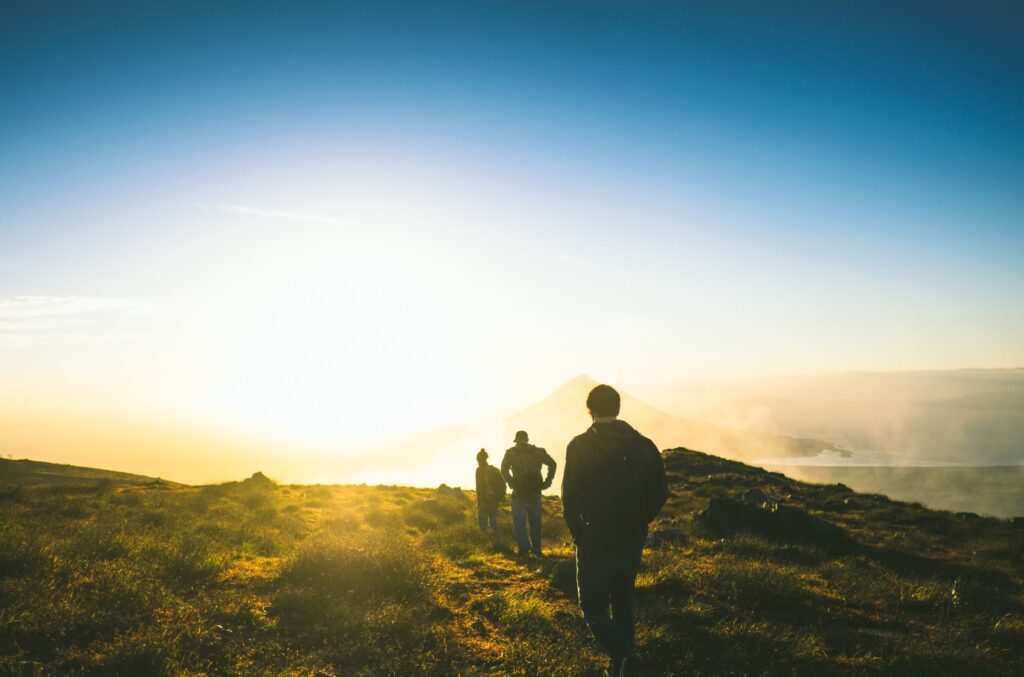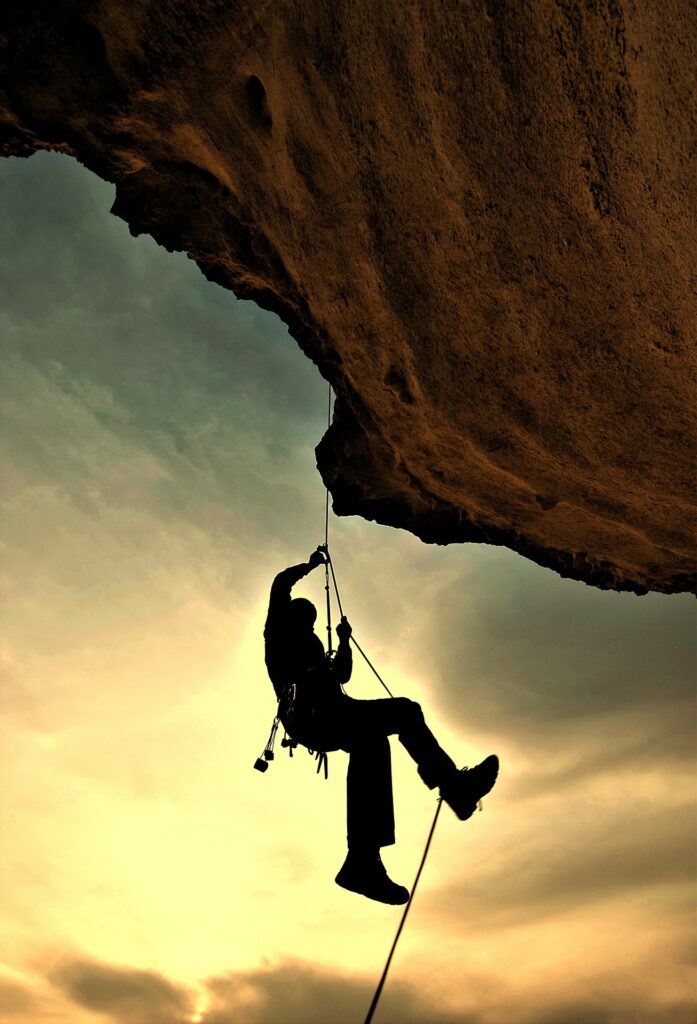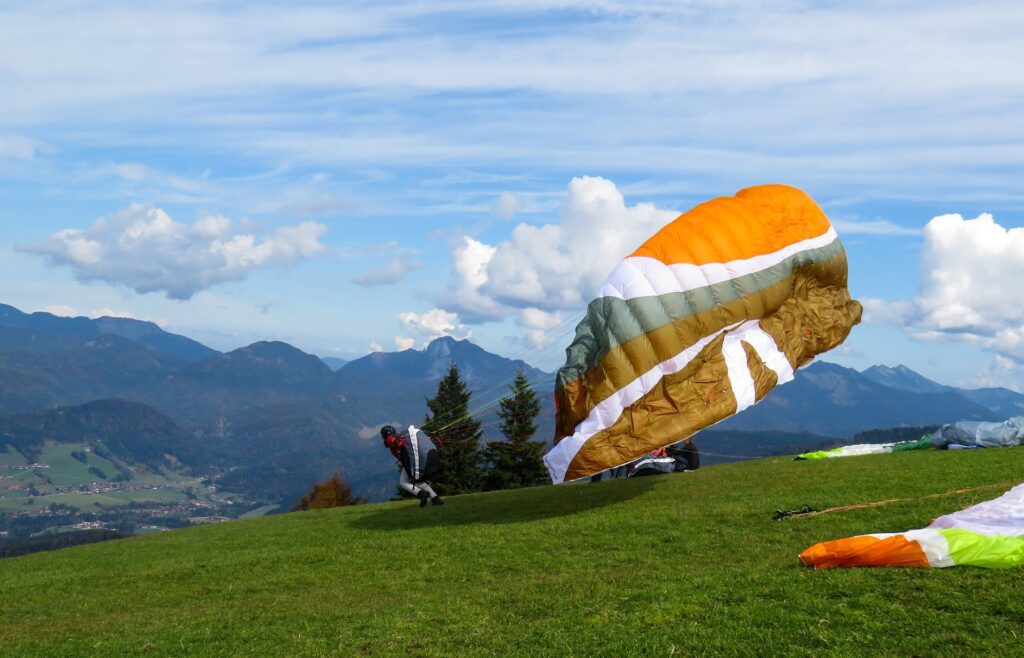Delphi Travel Guide , Greece
Introduction
Delphi Travel Guide , Greece- Delphi, renowned for its ancient oracle, holds a special place in Greece‘s history. Pilgrims from all over the Mediterranean would visit Delphi to seek prophecies from the famed oracle of Apollo, delivered through the words of Pythia, the high-priestess. Perched on the slopes of Mount Parnassus, Delphi is considered one of the most sacred sites in Greece, recognized as a UNESCO World Heritage Site. It served as a spiritual and cultural center, influencing the entire nation.
Delphi’s breathtaking landscape encompasses the convergence of three magnificent mountain massifs, creating a geophysical masterpiece. The expansive olive groves, the Corinthian Gulf, and the rugged slopes of Mount Parnassus paint a mesmerizing panorama. Delphi’s power and significance led to its declaration as the navel of the earth, leaving an everlasting impression. The natural beauty of Delphi, with its olive groves and stunning views, blends harmoniously with its cultural legacy.
Visiting Delphi evokes a sense of wonder, transporting you to a realm where mythology comes alive. The captivating scenery, the whispers of ancient oracles, and the divine atmosphere immerse you in the mythical world of the Olympian Gods. Delphi’s enchanting spirit and mystical ambiance make it a cultural and natural treasure that should be experienced at least once in a lifetime. Let the vibrant colors, harmonious surroundings, and divine aura of Delphi ignite your imagination and leave an indelible mark on your journey.
Are you ready to discover the mythical magic of Delphi?
Things to do in Delphi
Delphi is primarily known for day visits rather than extended stays, and the range of activities available is limited. There are no specific organized activities in Delphi. However, the area is perfect for overall relaxation in the countryside and exploring the archaeological site for sightseeing purposes. Visitors can enjoy the serene surroundings and immerse themselves in the historical significance of the ancient site.
The Archaeological Site of Delphi
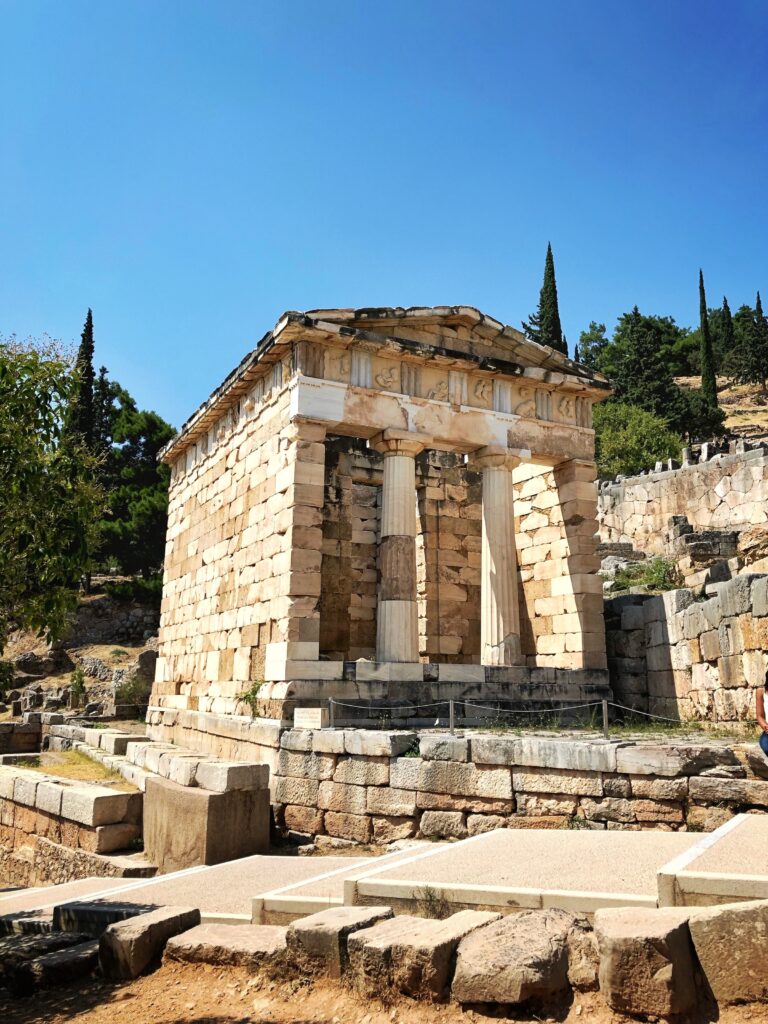
The Archaeological Site of Delphi, located at the foot of Mount Parnassus, is renowned as the famous oracle of Ancient Greece. It holds the title of the “navel of the world” and boasts a stunning landscape chosen by Zeus himself. Delphi served as the cultural and spiritual center of the Hellenic world for centuries, with its history dating back to Greek mythology. The site’s earliest traces can be found in the Neolithic period, and extensive excavations led by the French School of Athens in 1891 have shed light on the ancient Greek civilization.
The sanctuary of Delphi includes sanctuaries dedicated to Apollo and Athena, along with various other structures used for various activities. As visitors approach from Athens, they encounter the sanctuary of Athena Pronaia, situated before the temple of Apollo. Outside the sanctuary walls lies the settlement of Delphi, while within the walls stand the famous Tholos and the remains of three temples dedicated to the goddess Athena. The earlier temples were constructed of tufa and date back to the 7th century and around 500 BC. The third temple, built of limestone, was erected at the west end of the sanctuary following an earthquake in 373 BC. Other notable features of the sanctuary include altars dedicated to Zeus Polieus, Athena Ergane, Athena Zosteria, Eileithyia, and Hygeia. There are also remains of buildings dedicated to the cult of local heroes Phylakos and Autonos, treasuries with marble roofs, and a variety of statues and memorials, including one honoring Emperor Hadrian.
Exploring the Archaeological Site of Delphi provides a fascinating glimpse into the rich history and religious significance of the ancient world. From the remnants of temples to treasuries and memorial structures, visitors can immerse themselves in the legacy of this renowned oracle and marvel at the architectural wonders of the past.
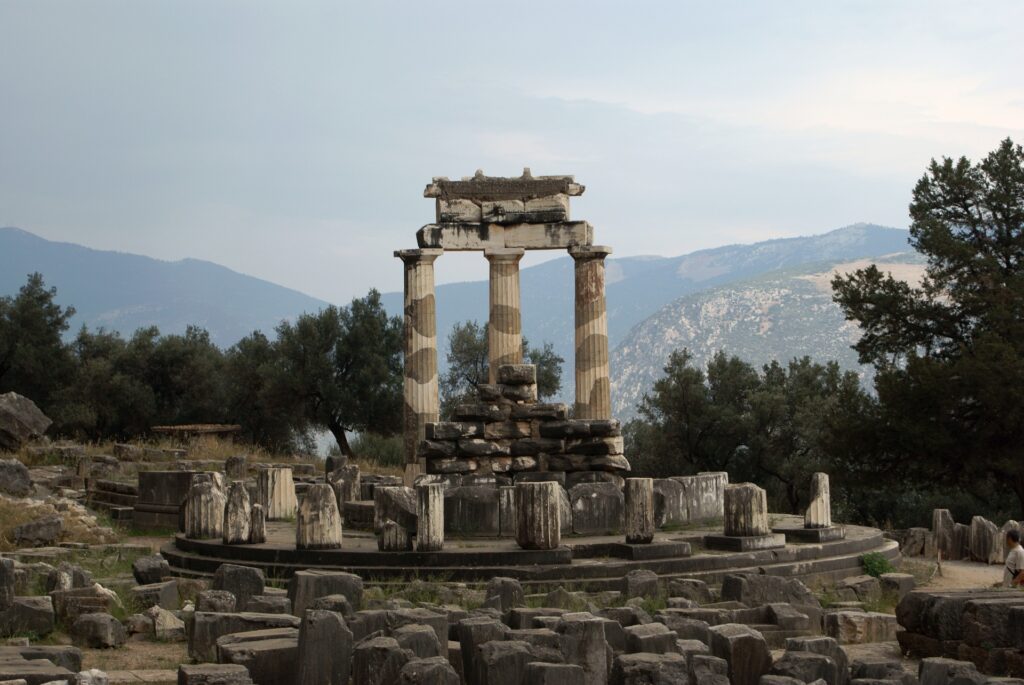
Located to the northwest of the sanctuary of Athena Pronaia, visitors can explore several notable areas. The gymnasium, a space for physical exercise and education, as well as the palaestra and the baths, were situated in this region. Moving up the slope, one would encounter the Castalian spring, a sacred spring where pilgrims would quench their thirst and purify themselves before consulting the oracle.
The central and most significant part of the site was the sanctuary of Apollo, enclosed by the customary peribolos, or enclosure wall, with a main gate located at its southeast corner. Upon entering, visitors would embark on the Sacred Way, the pathway leading to the temple of Apollo. This renowned temple housed the adyton, where Pythia delivered her oracles. With the temple and the Sacred Way at its core, the sanctuary expanded, featuring artificial terraces supported by monumental walls. Porticoes such as the Attalus, the Aetolians, and the Athenians bordered these terraces, each accessed through corresponding gates within the enclosure wall.
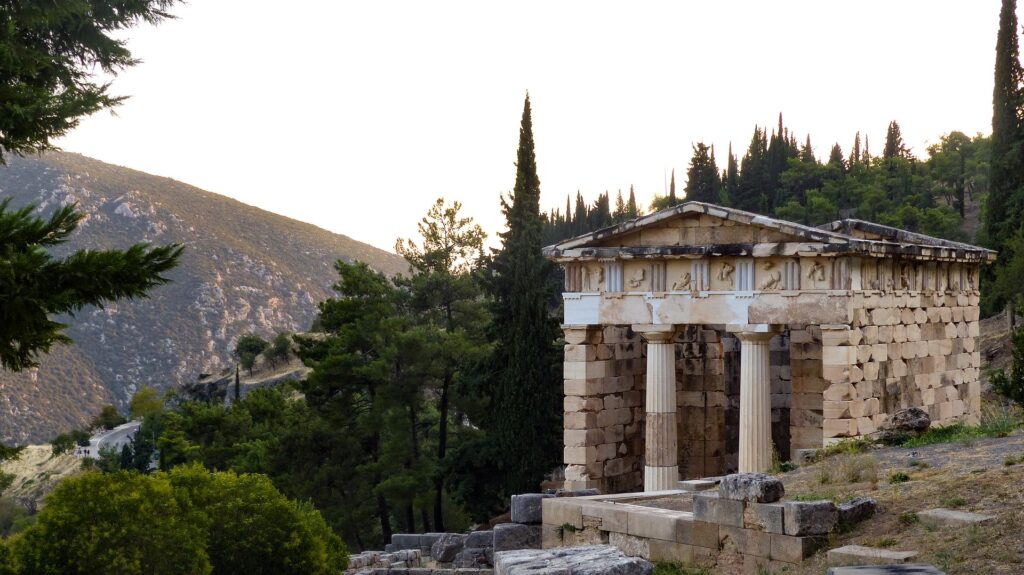
Scattered throughout the site, along the Sacred Way, stood numerous votive monuments offered by Greek cities and affluent individuals to commemorate social and political occasions or to express gratitude to the god and his oracle. These monuments showcased artistic achievements from the eastern regions to the Mediterranean coasts, reflecting the wealth of their patrons. Ranging from bronze and silver tripods (symbols of the oracle) to elaborate groups of sculptures in bronze or marble, these votive offerings captivated visitors.
Treasuries, opulent yet compact structures, were dedicated to storing smaller votive offerings while also showcasing the artistry and grandeur of the sponsoring city. The magnificent temple of Apollo, situated atop a colossal terrace supported by a remarkable polygonal wall, commanded the sanctuary. Just in front of its entrance, visitors marveled at a series of impressive votive monuments primarily donated by prosperous individuals. Above the temple, the theater hosted Pythian Games’ theatrical and musical contests, while further up the slope, beyond the sacred precinct, lay the stadium for athletic competitions.
Surrounding the sanctuaries, the remains of Delphi’s settlement and cemeteries extend, with their development mainly occurring during the Classical and Roman periods.
The Temple of Apollo
The temple of Apollo held a position of great significance within the sanctuary of Apollo in Delphi. It was the central and dominant structure, housing sacred statues and offerings dedicated to the god. The temple served as the site for important cult rituals, including divination, and also housed the chresmographeion, an archive containing records of Pythian Games victors until its destruction in 373 BC.
Legend has it that the original temple of Apollo at Delphi was constructed using laurel branches, followed by one made of beeswax and feathers, and then one made of bronze. The fourth temple, believed to be the stone temple destroyed by fire in 548 BC, was said to have been built by the legendary architects Trophonios and Agamedes with assistance from Apollo himself. Its replacement, completed around 510 BC, was a magnificent Doric peristyle temple. This temple, funded by contributions from both Greeks and non-Greeks, showcased the wealth and importance of Delphi, with the Alkmaeonid family of Athens playing a significant role in its construction.
The stone-built temple was adorned with marble and exhibited a grandeur befitting its sacred status. It featured a Doric architectural style with six columns at the front and fifteen columns on the sides. The temple was lavishly adorned with sculptures created by the renowned artist Antenor. The east pediment depicted the divine arrival of Apollo, Artemis, and Leto at Delphi, with the central scene showcasing the gods’ chariot surrounded by male and female figures. While only fragments remain, the surviving elements of the west pediment portray Athena, a fallen giant, a male figure, and horses engaged in the epic battle known as the Gigantomachy, representing the conflict between gods and giants.
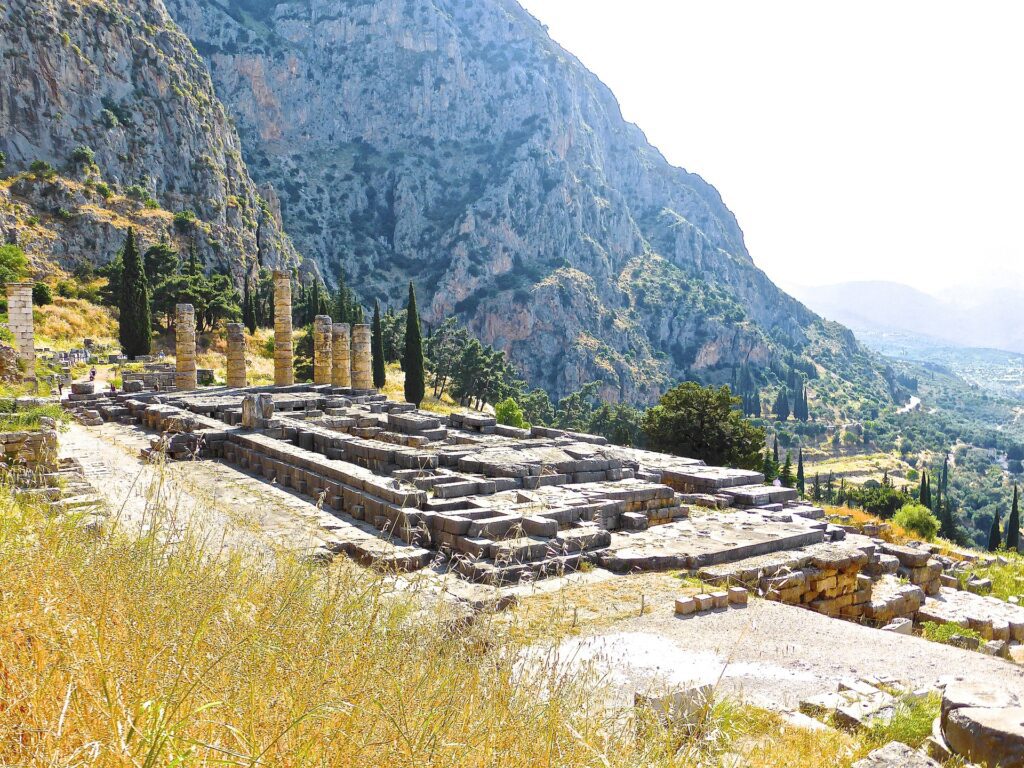
The temple mentioned previously was destroyed by an earthquake in 373 BC. The current temple, also constructed with contributions from the Greeks, was not completed until after the Third Sacred War, around 330 BC. This impressive Doric temple was erected by the architects Spintharos from Corinth, Xenodoros, and Agathon. It followed the same plan and had similar dimensions to its predecessor, with six columns at the front and fifteen on the sides. The temple had both a prodomos and opisthodomos in antis, and its cella was divided into three naves by colonnades of eight Ionic columns each. The divination ceremony took place in the adyton, an underground chamber accessible only to the priests interpreting Pythia’s words.
The pedimental sculptures, crafted from Parian marble, were the works of Athenian sculptors Praxias and Androsthenes. The east pediment depicted Apollo and the Muses, while the west pediment portrayed Dionysus and the Maenads. Limited information is available about the arrangement of the temple’s interior. Ancient writers mention that the walls of the pronaos were inscribed with aphorisms of the seven sages, including phrases like ‘know thyself,’ ‘everything in moderation,’ and the letter E. Inside, there was a bronze effigy of Homer, an altar of Poseidon, and a statue of Apollo with the omphalos in the adyton. The temple has undergone partial restoration, and fragments of both the Archaic and the Classical/Hellenistic temple’s pedimental sculptures are displayed in the Delphi Archaeological Museum.
Archaeological research in Delphi
Research into the archaeology of Delphi began in 1860, led by German scholars. In 1891, the Greek government granted permission to the French School at Athens for extensive excavations at the site. This undertaking, known as the “Great Excavation,” necessitated the removal of the village of Kastri. The excavations revealed extraordinary artifacts, including approximately 3,000 inscriptions that greatly contribute to our understanding of ancient Greek public life.
Currently, the Greek Archaeological Service and the French School at Athens continue their collaborative efforts to study, excavate, and preserve the two sanctuaries of Delphi. Of the various structures, the Treasury of the Athenians is the only one with enough original material to undergo a nearly complete reconstruction. This restoration project, funded by the City of Athens and carried out by the French School, took place from 1903 to 1906. Partial restoration work has also been conducted on the Chiot altar, the Temple of Apollo, and the Tholos.
In the years 1927 and 1930, poet Angelos Sikelianos and his wife, Eva, launched a remarkable initiative to revive the spirit of Delphi and transform it into a thriving cultural center. Through a series of events, including performances of ancient theater, they aimed to rekindle the cultural significance of Delphi and establish it as a beacon of artistic expression.
The Archaeological Museum of Delphi

The Archaeological Museum of Delphi stands as one of Greece’s most significant archaeological museums, conveniently situated adjacent to the archaeological site. Its permanent exhibition spans a period of 1,000 years, encompassing the Mycenaean era through the Greco-Roman period. Within its walls, the museum houses a highly esteemed collection of ancient Greek art, including precious artifacts of immense historical value.
One of the museum’s focal points is the history of the Delphi Oracle, tracing its origins back to prehistoric times. The extensive collections feature statues, objects, and sculptures discovered within the sanctuary, offering insights into the artistic, political, and religious activities that thrived from the 8th century BC until the decline of the oracle in Late Antiquity. Notable highlights among the museum’s treasures include the renowned Charioteer Statue, a masterpiece of classical bronze artistry, the sacred Omphalos, an emblematic symbol of Delphi, and the imposing Naxian Sphinx, an extraordinary statue that commands attention.
Visitors to the Archaeological Museum of Delphi are treated to an extraordinary journey through time, exploring the depth and breadth of Delphi’s rich history and the remarkable artistic achievements of ancient Greece.
Delphi Travel Guide : Not to Miss
255 km Ultra-marathon of Delphi
Are you a passionate athlete seeking to push your boundaries? The Pheidippides Run, from Delphi to Ancient Olympia, presents an extraordinary challenge each year. Spanning 255 kilometers, participants have a time limit of 48 hours to complete the course. The route encompasses a combination of dirt roads, forest paths, footpaths, and sections of asphalt. As you traverse the course, you will encounter mountainous terrain, reaching altitudes of 1,100 meters, with an impressive positive ascent of 4,500 meters and a challenging negative ascent of 5,100 meters. The Pheidippides Run offers a remarkable opportunity to test your endurance and embrace the spirit of legendary athleticism.
Events & Festivals
Every year on the 6th of January, the village of Itea comes alive with the Epiphany Festival. This vibrant celebration involves the sanctification of water, as the Holy Cross is ceremoniously cast into the sea while priests chant psalms. In February or March, the city of Amfissa hosts the lively Carnival of Amfissa. The carnival features a traditional chariot march and culminates with the symbolic burning of the Carnival King. The procession of black torchbearers dragging chains, known as the stichia of Harmena, adds to the festive atmosphere.
Clean Monday in Galaxidi is marked by the Alevromoutzouromata Custom, a joyous event that signifies the end of the carnival season. Participants come together to playfully throw colored flour at each other, creating a colorful and lively atmosphere. Easter in Fokida is a deeply traditional celebration observed throughout the region. Towns and villages embrace the holiday with the cooking of lambs in potholes and the enchanting sounds of traditional songs and dances.
During the summer months, the town of Itea hosts the Nautical Week, a week-long event filled with various athletic and cultural activities. June brings the Feast of Trata Fish in the village of Eratini, where visitors are treated to sardines and wine, accompanied by spirited musical performances. In July, the Forest Sounds Festival takes place in the village of Kaloskopi, offering three days of captivating musical concerts.
August is a month of festivities, with Gravia village hosting the Wine Festival, where wine enthusiasts can indulge in a variety of local wines. At the same time, Krokilio village celebrates the Makrigiannia Festival in honor of Makrigiannis, a hero of the 1821 Revolution. This five-day festival features a vibrant mix of cultural and musical events. On the 6th of September, the village of Panourgias commemorates the Archangels with a traditional celebration known for its lively and customary festivities.
Delphi serves as a cultural hub, organizing events through the European Cultural Center of Delphi. Ancient tragedies, musical concerts, and theatrical performances are showcased, offering attendees a unique cultural experience. The historic theater of Delphi provides a stunning backdrop for these captivating events.
Read more on Greece Cultural Events
Carnivals and Legends: Night of Ghosts in Amfissa
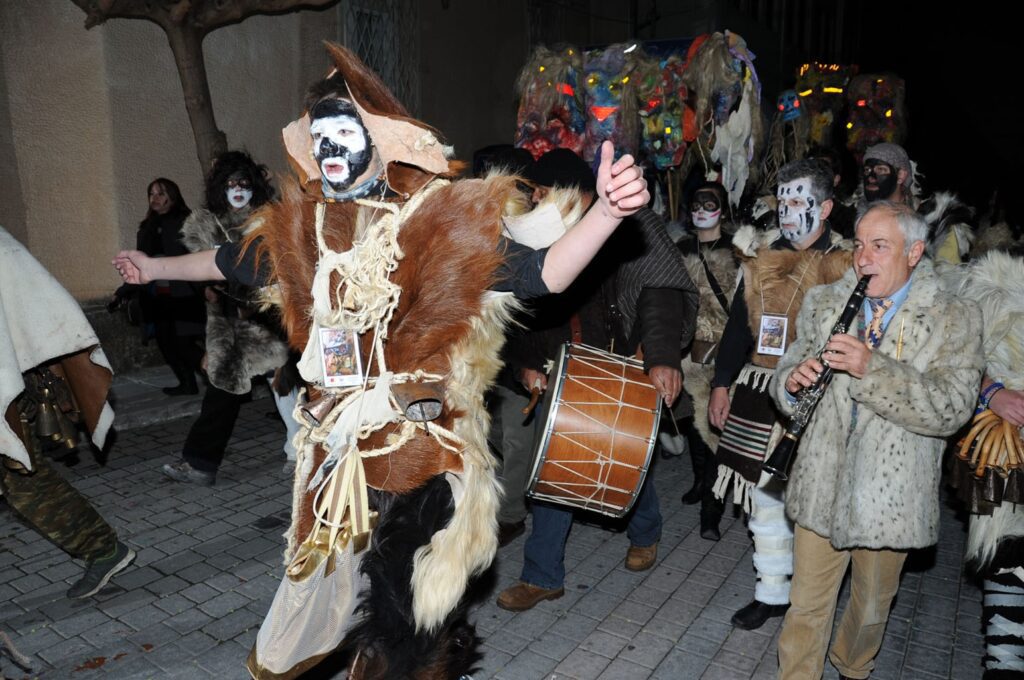
During the last weekend of the Carnival season, the picturesque town of Amfissa in the mountains celebrates a unique tradition that honors a tragic love story from years past. The district of Harmena becomes the setting for this commemoration, as locals dress up as fairies, ghosts, and tanners, reviving the tales of wandering souls and haunted spirits that are said to roam the town.
According to the legend, there once existed a beautiful young woman and a handsome man deeply in love, filled with dreams and plans for their future together. One day, as the woman went to fetch water, a sudden and heavy rainstorm trapped her beneath a tree. She waited for the rain to subside, but tragically, she was struck by lightning and lost her life. Overwhelmed by grief upon learning of her untimely death, her fiancé succumbed to despair and was found lifeless by his friends the next day. However, due to the belief that he had taken his own life, the church denied him a proper burial, condemning him to eternal wandering within the town.
During the Carnival festivities, the haunting legends and the poignant love story are vividly brought to life by the townspeople. Through their costumes and performances, they remember and honor the spirits of the ill-fated lovers, creating an ethereal atmosphere that serves as a reminder of the enduring power of love and the sadness that accompanies the eternal fate of lost souls. This tradition in Amfissa resonates with both locals and visitors alike, embracing the mystique and melancholy of the tragic tale that has become an integral part of the town’s cultural heritage.
Eating and Drinking in Delphi
Delphi presents an enchanting blend of historical significance, picturesque landscapes, and an opportunity to immerse oneself in authentic Greek culture. Beyond its renowned attractions, the village offers a delightful gastronomic experience that showcases the richness of Greek cuisine. A variety of charming taverns in the Delphi region are ideal for enjoying a leisurely lunch or a satisfying dinner. These family-run establishments exemplify the essence of Greek traditions and ensure an authentic dining experience. Here are some exceptional recommendations for savoring the flavors of Greek cuisine during your visit to Delphi.
Vakhos, situated on Delphi’s main street, boasts unparalleled views of the Corinthian Sea. The Theodorakis family, who own and operate the tavern, warmly welcome guests and provide recommendations from their daily specials menu. With a focus on traditional Greek recipes prepared using locally sourced ingredients, Vakhos offers an array of mouthwatering options. From refreshing salads featuring fresh greens and chickling vetches to saganaki made with local cheese, dolmades, pies, soups, and delightful chicken dishes accompanied by fresh pasta, the menu pays homage to the seasonal and regional characteristics of Greek cuisine. A standout feature is the daily salad, comprising vegetables handpicked by the family’s patriarch—an absolute must-try for visitors.
To Patriko Mas, meaning “Our Family House,” is another exceptional dining destination. Located in a picturesque setting, it provides stunning views and an opportunity to witness breathtaking sunsets while relishing a menu that seamlessly blends Greek and European influences. From meticulously crafted salads and delectable pies to tantalizing main courses, the dishes cater to diverse palates and ensure a memorable culinary experience for all.
Cafe Melopoleio, affectionately known as “The Honey Spot,” offers a distinct culinary experience in a different part of Delphi. Begin your day with freshly squeezed juices, Greek yogurt adorned with ripe fruits, or cheese pies. Alternatively, indulge in a cup of aromatic Greek coffee or a soothing cup of tea sourced from Mount Parnassus. Throughout the day, the café serves expertly prepared sandwiches for a quick and satisfying bite. In the evening, unwind with a glass of Greek wine or beer, accompanied by delightful music, providing the perfect atmosphere for relaxation and enjoyment.
Fourlas, situated in the nearby traditional village of Chrisso, invites visitors to experience authentic regional cuisine. Revel in the perfectly roasted and charcoal-grilled meats, homemade pies, fresh salads, and locally sourced cheeses that highlight the culinary treasures of the area. The stunning view of the Corinthian Bay adds an extra touch of charm to your dining experience. Fourlas is open for lunch and dinner, and reservations are not necessary.
Harmena, centrally located amidst stone brick roads and remnants of old leather factories, takes its name from a traditional neighborhood in the upper part of Amfissa. At Harmena, savor classic meat dishes such as souvlaki and steaks, complemented by appetizers, fresh-cut fries, and Greek salads brimming with olives and feta cheese. Open from early morning, Harmena serves Greek coffee and traditional spoon sweets, providing an opportunity to start your day with a taste of Greek tradition. For lunch and dinner, enjoy their flavorful offerings alongside a glass of local wine or tsipouro, a potent distilled spirit.
These culinary establishments in Delphi offer a diverse array of options to satisfy your cravings and introduce you to the authentic flavors of Greek cuisine. Immerse yourself in the local culture, revel in the magnificent surroundings, and create cherished memories through these delectable dining experiences.


